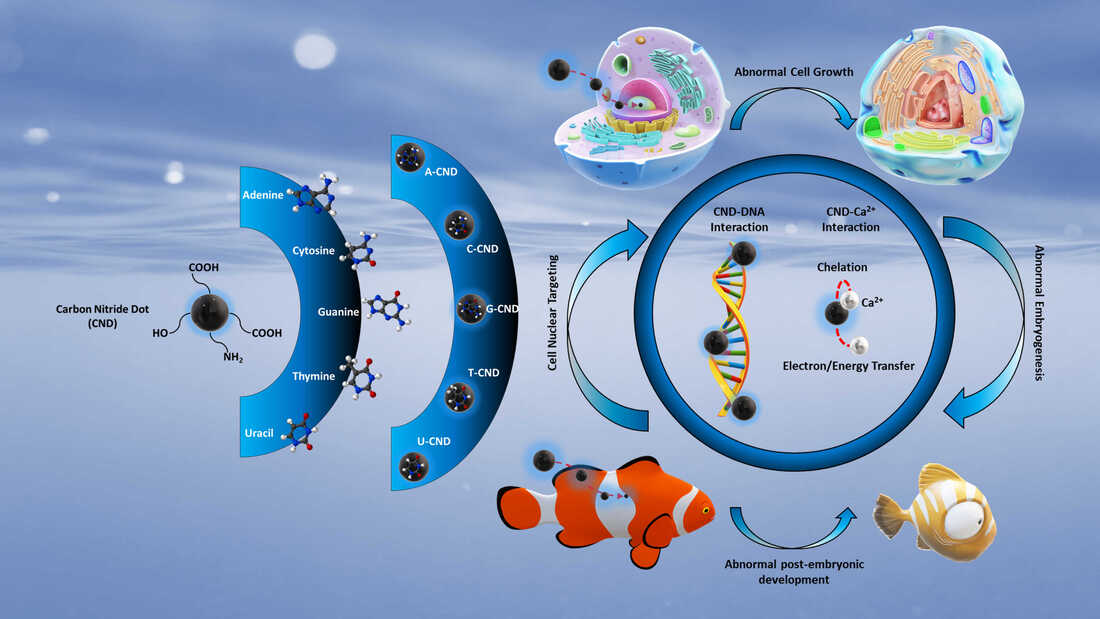|
A new lab contribution led by Yiqun Zhou and the group of Roger LeBlanc at the University of Miami published this week in the Royal Society of Chemistry's journal Nanoscale examines whether carbon nitride dots (CND), a type of carbon-based nanomaterial, can act as nucleobase analogs. Although the physicochemical property characterization demonstrated that adenine- and cytosine-incorporated CNDs are similar, guanine-, thymine- and uracil-incorporated CNDs did not exhibit as many similarities in their properties, morphology, and structure. Exposing developing zebrafish embryos to CNDs interrupts development, but the causes do not seem to be related to CNDs directly interfering with DNA replication, as shown in experiments comparing amplification of the zebrafish polymerase-alpha 1 gene in quantitative polymerase chain reactions. The embryogenesis interruption by bare and nucleobase-incorporated CNDs might thus not be a consequence of CND–DNA interactions during DNA replication. Instead, CND–Ca2+ interactions offer a plausible mechanism that hindered cell proliferation and zebrafish embryogenesis originating from disturbed Ca2+ homeostasis by CNDs.
0 Comments
|
Archives
June 2024
CATENAZZI LABNews from the lab Categories |

 RSS Feed
RSS Feed